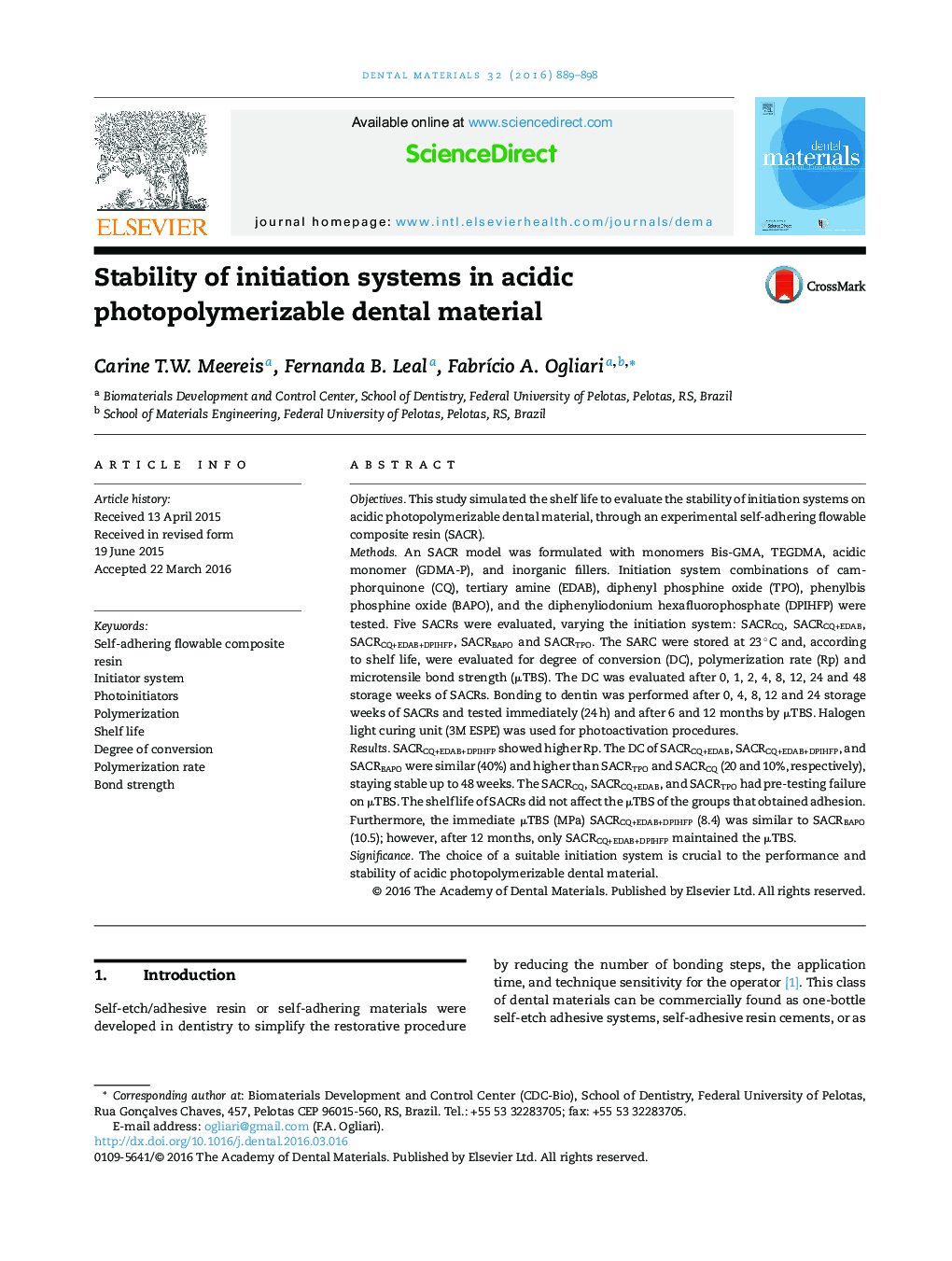| Article ID | Journal | Published Year | Pages | File Type |
|---|---|---|---|---|
| 1420404 | Dental Materials | 2016 | 10 Pages |
ObjectivesThis study simulated the shelf life to evaluate the stability of initiation systems on acidic photopolymerizable dental material, through an experimental self-adhering flowable composite resin (SACR).MethodsAn SACR model was formulated with monomers Bis-GMA, TEGDMA, acidic monomer (GDMA-P), and inorganic fillers. Initiation system combinations of camphorquinone (CQ), tertiary amine (EDAB), diphenyl phosphine oxide (TPO), phenylbis phosphine oxide (BAPO), and the diphenyliodonium hexafluorophosphate (DPIHFP) were tested. Five SACRs were evaluated, varying the initiation system: SACRCQ, SACRCQ+EDAB, SACRCQ+EDAB+DPIHFP, SACRBAPO and SACRTPO. The SARC were stored at 23 °C and, according to shelf life, were evaluated for degree of conversion (DC), polymerization rate (Rp) and microtensile bond strength (μTBS). The DC was evaluated after 0, 1, 2, 4, 8, 12, 24 and 48 storage weeks of SACRs. Bonding to dentin was performed after 0, 4, 8, 12 and 24 storage weeks of SACRs and tested immediately (24 h) and after 6 and 12 months by μTBS. Halogen light curing unit (3M ESPE) was used for photoactivation procedures.ResultsSACRCQ+EDAB+DPIHFP showed higher Rp. The DC of SACRCQ+EDAB, SACRCQ+EDAB+DPIHFP, and SACRBAPO were similar (40%) and higher than SACRTPO and SACRCQ (20 and 10%, respectively), staying stable up to 48 weeks. The SACRCQ, SACRCQ+EDAB, and SACRTPO had pre-testing failure on μTBS. The shelf life of SACRs did not affect the μTBS of the groups that obtained adhesion. Furthermore, the immediate μTBS (MPa) SACRCQ+EDAB+DPIHFP (8.4) was similar to SACRBAPO (10.5); however, after 12 months, only SACRCQ+EDAB+DPIHFP maintained the μTBS.SignificanceThe choice of a suitable initiation system is crucial to the performance and stability of acidic photopolymerizable dental material.
